In Utah, a diverse array of fifteen owl species inhabit various ecosystems, showcasing nature’s remarkable adaptability. From the iconic Great Horned Owl to the elusive Boreal Owl, these birds of prey play pivotal roles in maintaining ecological balance.
Their varied sizes, distinct markings, and unique hunting behaviors contribute to the rich tapestry of Utah’s wildlife.
This comprehensive exploration will delve into the lives of these fascinating creatures, shedding light on their habitats, behaviors, and the conservation challenges they face.
Join us on a journey through Utah’s diverse landscapes as we unveil the captivating world of these nocturnal hunters and gain a deeper appreciation for the intricate web of life they represent in the state’s natural heritage.
15 Owls in Utah
This comprehensive guide will delve into the captivating lives of these owls, exploring their habitats, behaviors, and the conservation challenges they face.
1. Great Horned Owl
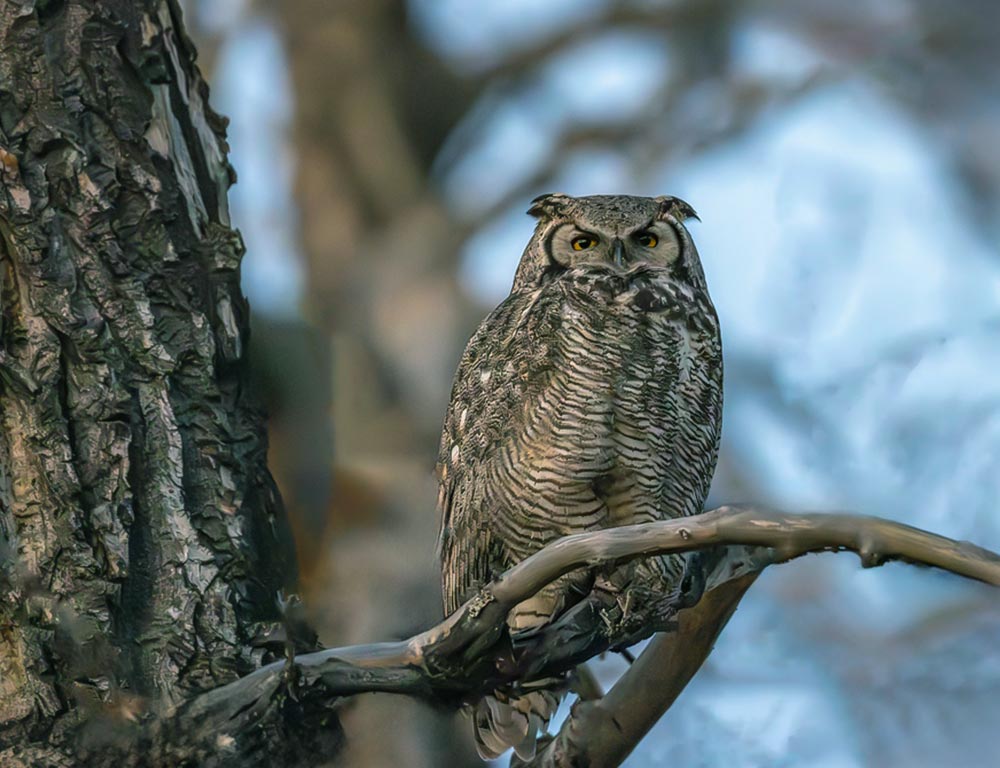
- Scientific name: Bubo virginianus
- Life span: 5-15 years in the wild
- Size: 18-25 inches
- Weight: 2-5.5 pounds
- Food: Carnivorous, preying on mammals, birds, and occasionally reptiles
- Wingspan: 3.3-4.8 feet
- Status: Common
With its distinctive ear tufts, the Great Horned Owl is a powerful and adaptable raptor found throughout Utah.
With a robust build and keen eyesight, these owls thrive in various habitats, from forests to deserts. Their diet includes rodents, rabbits, and even skunks, making them effective hunters.
Great Horned Owls are skilled nocturnal predators, utilizing their strong talons to secure prey. They are known for their deep hooting calls, echoing through the night as they establish territories.
2. Barn Owl

- Scientific name: Tyto alba
- Life span: 2-5 years in the wild
- Size: 12-15 inches
- Weight: 12-21 ounces
- Food: Primarily rodents, especially mice and rats
- Wingspan: 3.3-3.8 feet
- Status: Common
The Barn Owl, recognized by its heart-shaped facial disc, is a silent and elegant nocturnal hunter in Utah. Preferring open fields and agricultural areas, these owls rely on their exceptional hearing to locate prey in total darkness.
Their soft feathers allow for virtually silent flight, giving them an edge when sneaking up on unsuspecting rodents.
Barn Owls are crucial in controlling agricultural pests, making them beneficial to farmers. Despite their ghostly appearance, these birds are efficient predators with a specialized diet.
3. Burrowing Owl
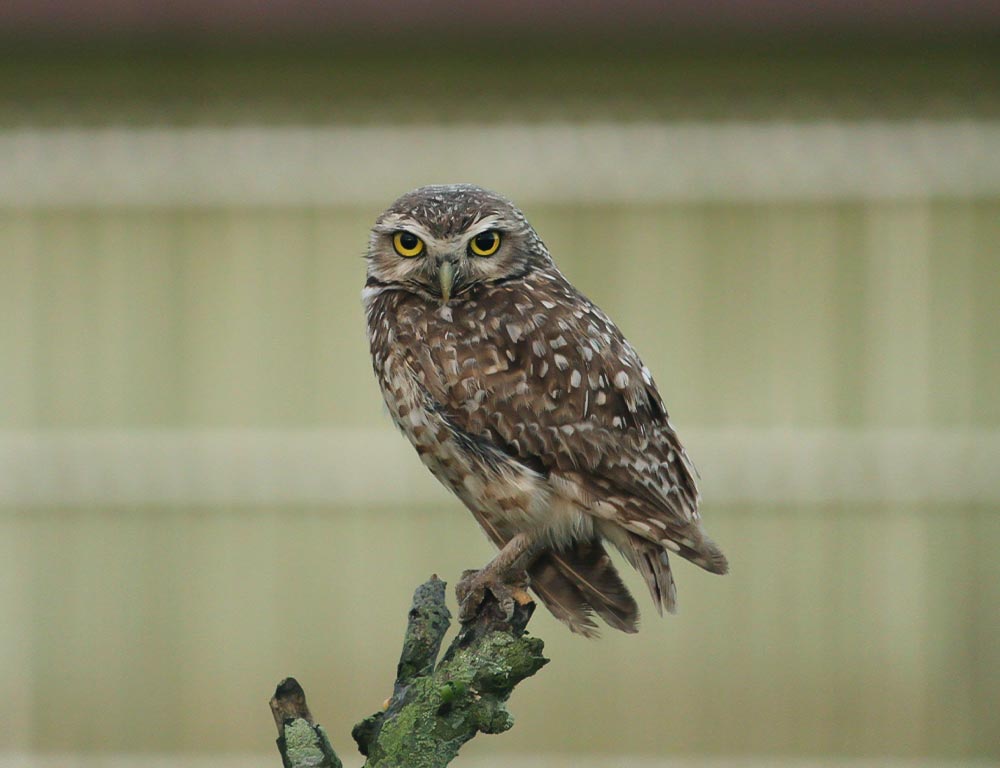
- Scientific name: Athene cunicularia
- Life span: 4-8 years in the wild
- Size: 7-10 inches
- Weight: 6-7 ounces
- Food: Insects, small mammals, and occasionally birds
- Wingspan: 21-24 inches
- Status: Declining
The Burrowing Owl, a small diurnal species, is known for its distinctive appearance and behavior.
Often found in open grasslands and prairies of Utah, these owls make their homes in abandoned burrows, showing a preference for areas with a mix of short vegetation.
They are opportunistic feeders, preying on insects and small mammals. Unfortunately, Burrowing Owl populations face threats due to habitat loss and human activities, making conservation efforts crucial for their survival.
4. Western Screech Owl
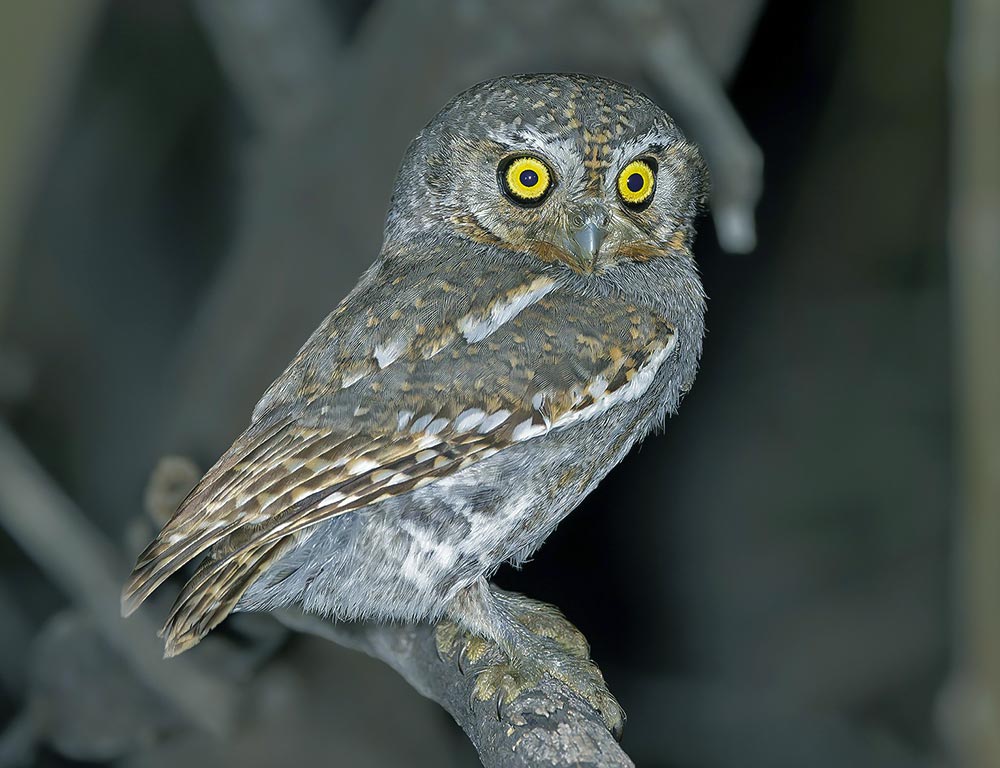
- Scientific name: Megascops kennicottii
- Life span: 4-14 years in the wild
- Size: 7-10 inches
- Weight: 6-9 ounces
- Food: Insects, small mammals, and birds
- Wingspan: 18-24 inches
- Status: Stable
The Western Screech Owl, a small and secretive owl, is found in various habitats across Utah, including woodlands and urban areas.
These owls are masters of camouflage, with plumage that matches their surroundings. Unlike some other owl species, they have a diverse diet, hunting insects, small mammals, and birds.
Known for their distinctive trilling calls during the breeding season, Western Screech Owls are adaptable and have successfully adapted to living near humans.
Despite their small size, these owls play a significant role in controlling pest populations in their ecosystems.
5. Flammulated Owl
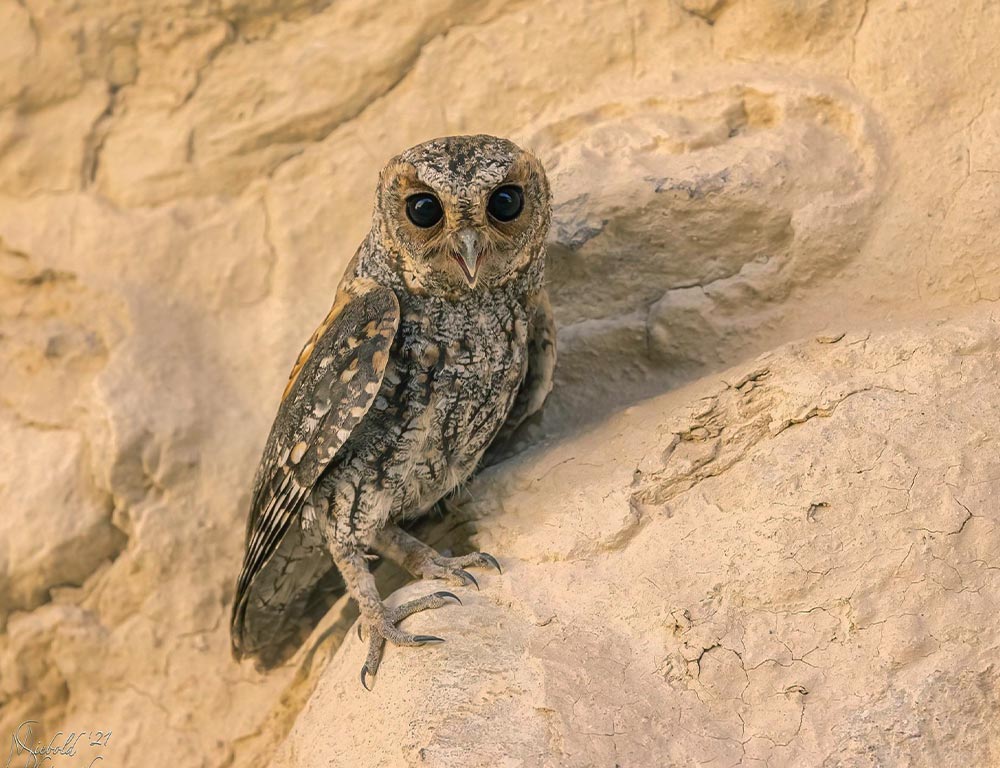
- Scientific name: Psiloscops flammeolus
- Life span: 2-5 years in the wild
- Size: 6-7 inches
- Weight: 1.5-2.5 ounces
- Food: Insects, especially moths and beetles
- Wingspan: 15-16 inches
- Status: Stable
The Flammulated Owl, one of the smallest owl species in Utah, resides in coniferous and mixed woodlands. With a distinct facial pattern and muted coloration, these owls are well-camouflaged among the trees.
Primarily nocturnal, Flammulated Owls feed on flying insects, using their excellent hearing to locate prey in the dark. They are known for their low hoots, often mistaken for insects’ sounds, contributing to their cryptic nature.
6. Northern Saw-whet Owl

- Scientific name: Aegolius acadicus
- Life span: 3-7 years in the wild
- Size: 7-8 inches
- Weight: 2-5 ounces
- Food: Small mammals, birds, and insects
- Wingspan: 16-18 inches
- Status: Stable
The Northern Saw-whet Owl, named after its distinctive call reminiscent of a sharpened saw, inhabits coniferous and mixed woodlands across Utah.
These compact owls have a round facial disc and large, yellow eyes. Saw-whet Owls are primarily nocturnal hunters, preying on small mammals, birds, and insects.
They are often observed perched low in trees, camouflaged by their plumage. Despite their small size, these owls are efficient predators and are vital in controlling rodent populations.
7. Great Grey Owl
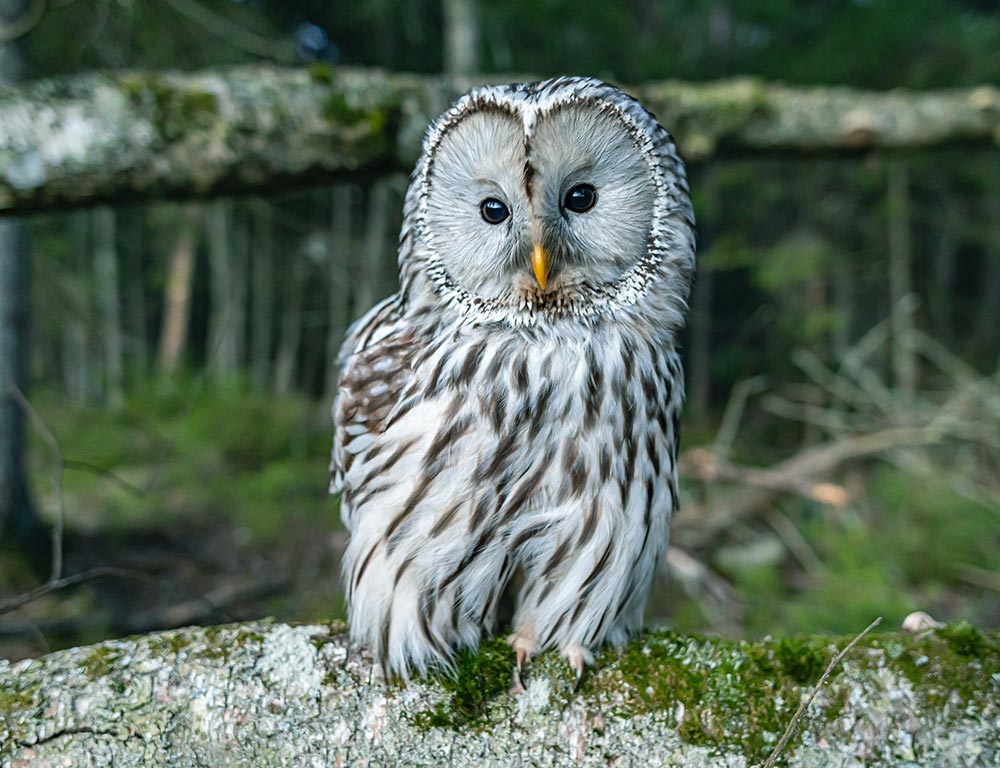
- Scientific name: Strix nebulosa
- Life span: 8-12 years in the wild
- Size: 24-33 inches
- Weight: 2-5 pounds
- Food: Small mammals, especially rodents
- Wingspan: 54-60 inches
- Status: Declining
With its large size and distinctive facial disc, the Great Grey Owl is a majestic inhabitant of coniferous forests in Utah. Recognized for its piercing yellow eyes and gray plumage, these owls are well-adapted to their cold environments.
Great Grey Owls primarily hunt small mammals, especially rodents, relying on their keen hearing to locate prey beneath the snow.
Unfortunately, these owls face threats from habitat loss and are considered a species of concern, requiring conservation efforts to ensure their survival.
8. Short-eared Owl
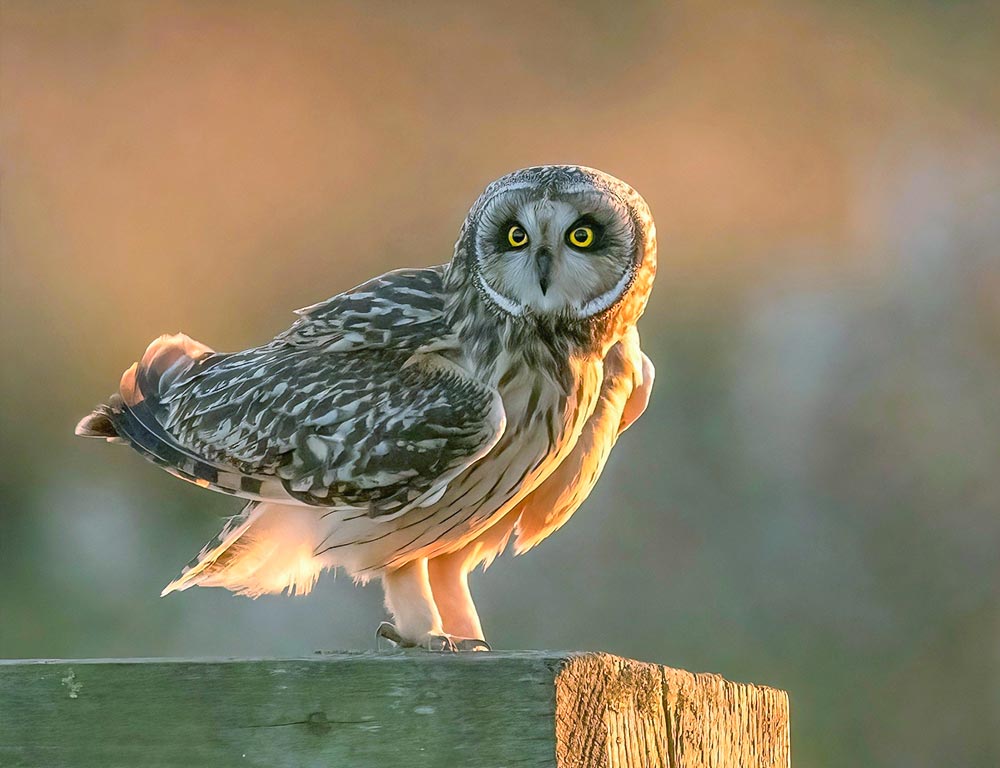
- Scientific name: Asio flammeus
- Life span: 4-7 years in the wild
- Size: 13-17 inches
- Weight: 7-17 ounces
- Food: Small mammals and birds
- Wingspan: 33-43 inches
- Status: Stable
The Short-eared Owl, characterized by its short ear tufts, is a diurnal and crepuscular species found in various open habitats across Utah, including grasslands and marshes.
These owls have a mottled brown appearance, providing effective camouflage. Short-eared Owls primarily feed on small mammals and birds, using their keen eyesight and agile flight to capture prey.
They are known for their distinctive hovering behavior while hunting. Despite being widespread, conservation efforts are crucial for maintaining their habitats and prey availability.
9. Long-eared Owl
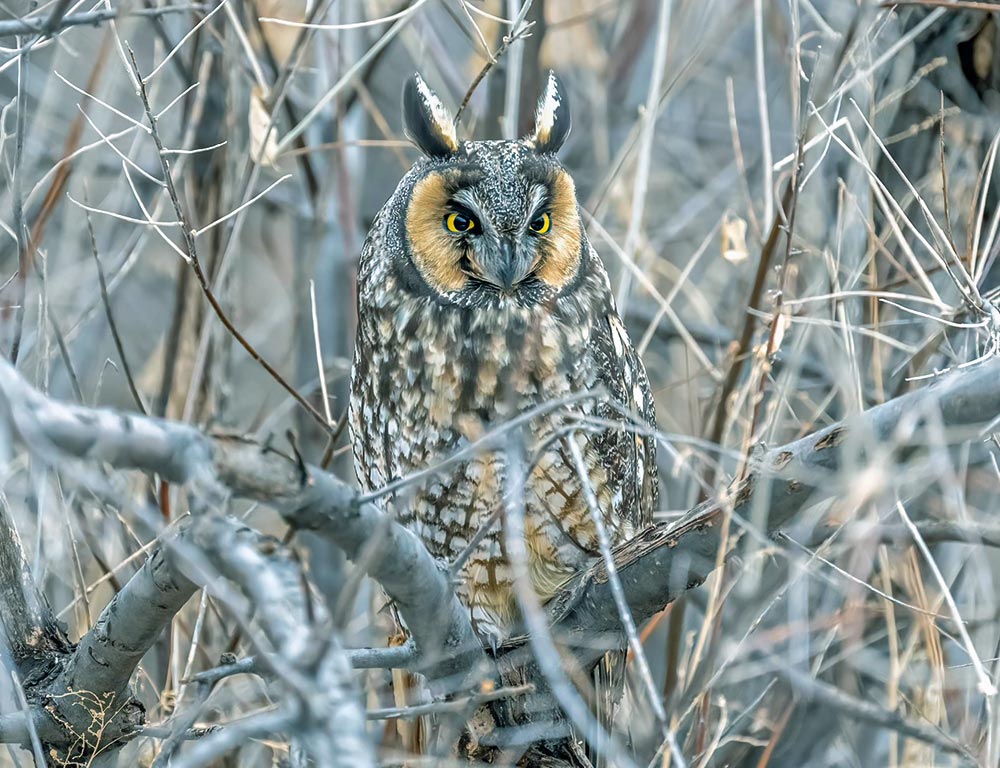
- Scientific name: Asio otus
- Life span: 4-10 years in the wild
- Size: 13-16 inches
- Weight: 7-16 ounces
- Food: Small mammals and birds
- Wingspan: 35-42 inches
- Status: Stable
The Long-eared Owl, named after its long tufts of feathers resembling “ears,” inhabits coniferous and deciduous forests in Utah.
These owls have a streaked appearance, providing excellent camouflage in their wooded environments. Long-eared Owls primarily feed on small mammals and birds, hunting silently in the night.
They are known for their roosting behavior, often perching close together in groups during the day. Despite being adaptable and widespread, conservation efforts are essential to preserve their habitats and ensure a stable prey base.
10. Spotted Owl
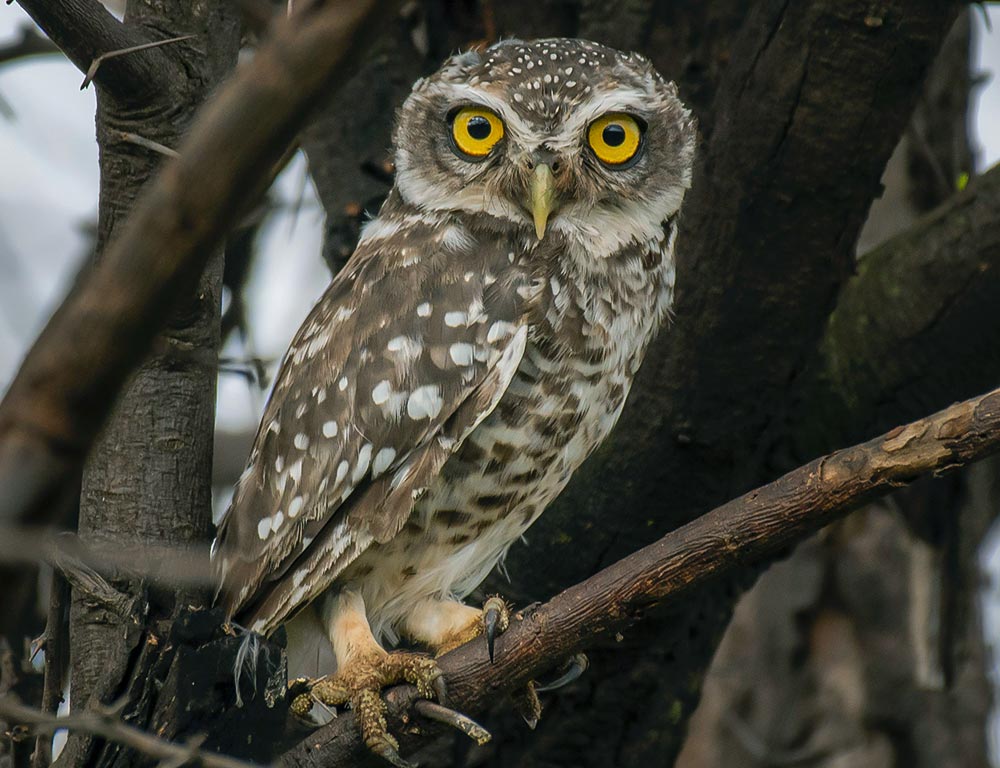
- Scientific name: Strix occidentalis
- Life span: 4-15 years in the wild
- Size: 17-19 inches
- Weight: 1-1.65 pounds
- Food: Small mammals, birds, and insects
- Wingspan: 40-45 inches
- Status: Threatened
The Spotted Owl, a medium-sized owl with distinctive dark eyes, is native to old-growth forests in Utah. Recognized for its mottled brown plumage and characteristic spotting, these owls are adapted to dense, mature woodlands.
Spotted Owls are primarily nocturnal hunters, feeding on small mammals, birds, and insects. Unfortunately, habitat loss, logging, and competition with the barred owl have significantly impacted their populations.
Conservation efforts are crucial to protect their remaining habitats and ensure the long-term survival of this threatened species.
11. Northern Pygmy Owl
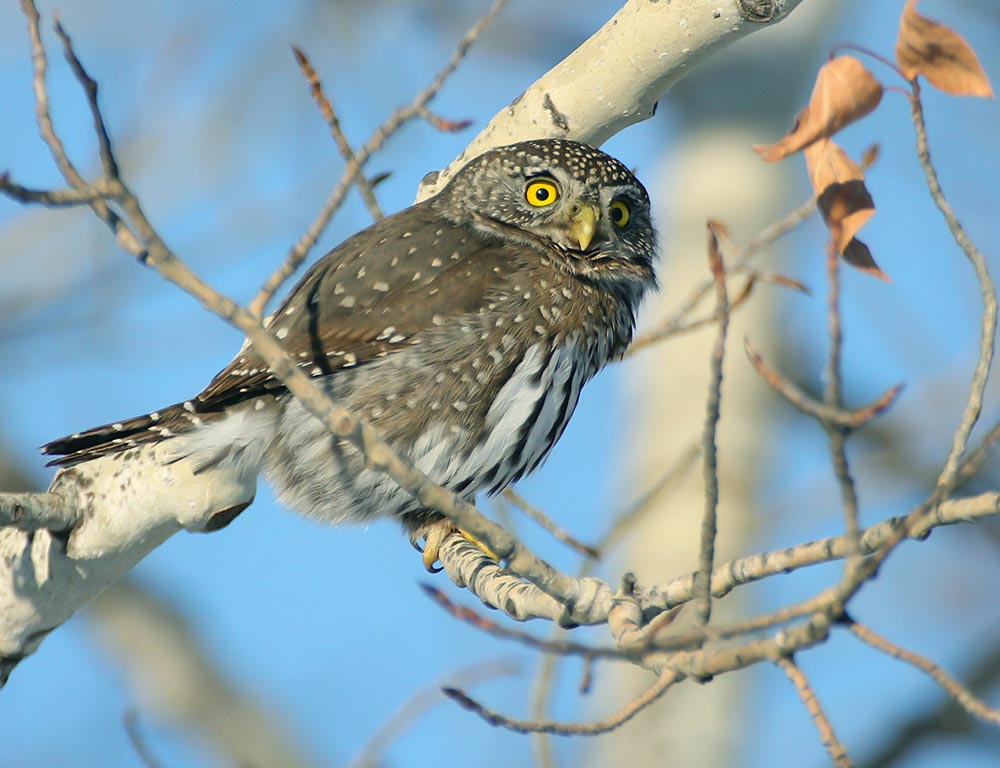
- Scientific name: Glaucidium californicum
- Life span: 3-7 years in the wild
- Size: 6-7 inches
- Weight: 2-3 ounces
- Food: Small birds and mammals
- Wingspan: 10-12 inches
- Status: Stable
The Northern Pygmy Owl, a small diurnal owl, is found in various habitats across Utah, including coniferous forests and wooded areas.
With their round heads, large yellow eyes, and distinctive “false faces” on the back of their heads, these owls are well-camouflaged among the trees. Northern Pygmy Owls are agile hunters, preying on small birds and mammals.
They are known for their territorial behavior and may actively defend their territories, even against larger birds. Despite their small size, these owls play a significant role in controlling populations of small mammals and birds in their ecosystems.
12. Boreal Owl
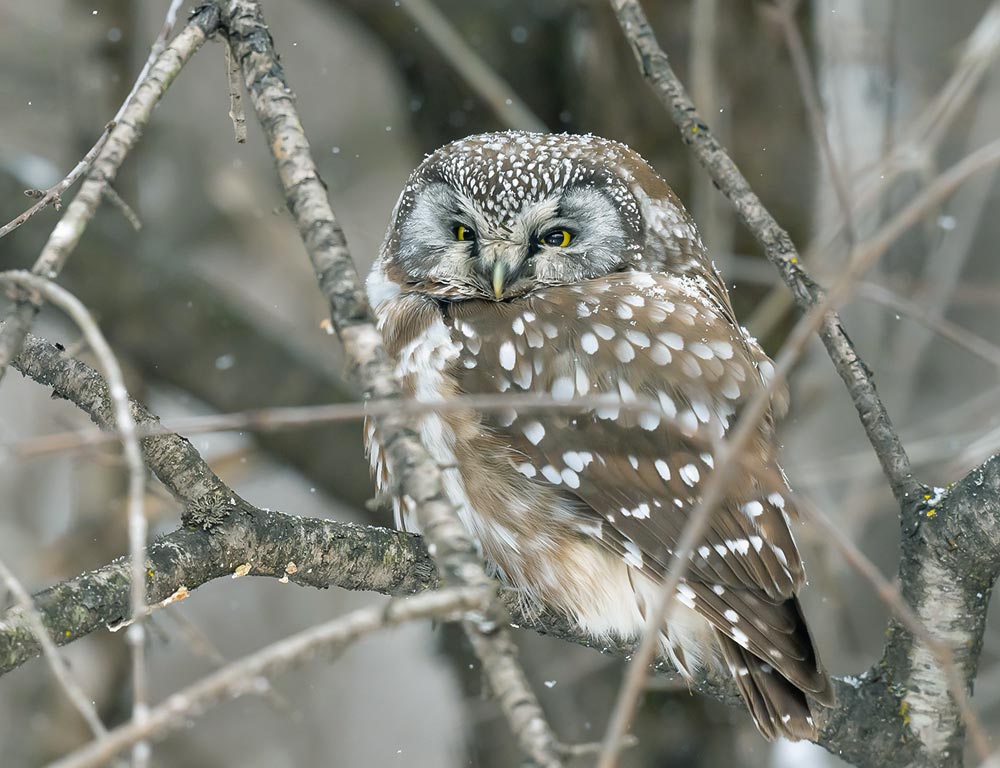
- Scientific name: Aegolius funereus
- Life span: 4-10 years in the wild
- Size: 9-12 inches
- Weight: 3-7 ounces
- Food: Small mammals, birds, and insects
- Wingspan: 21-27 inches
- Status: Stable
The Boreal Owl, a medium-sized owl with a round facial disc, is adapted to northern boreal forests, including those in Utah. With its dark eyes and brown plumage, these owls are well-camouflaged against the bark of trees.
Boreal Owls are nocturnal hunters, preying on small mammals, birds, and insects. They often nest in tree cavities or abandoned nests of other birds.
Despite their wide distribution, Boreal Owls are elusive and less frequently observed than some other owl species. Conservation efforts to protect their boreal forest habitats are essential for maintaining their populations.
13. Mountain Pygmy Owl
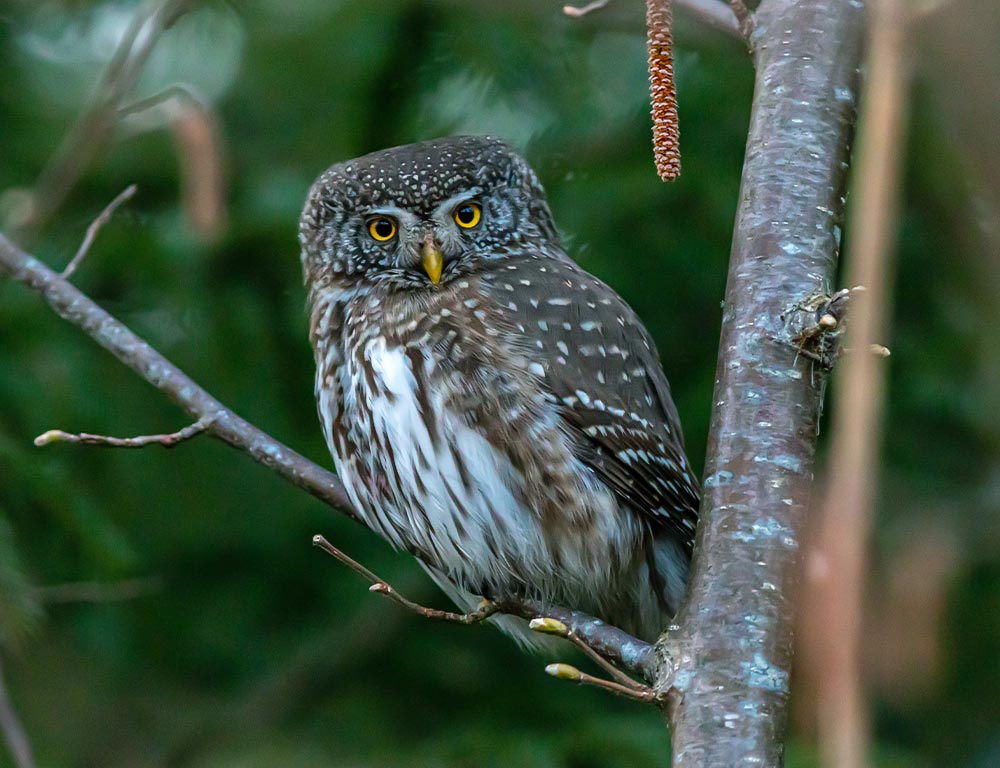
- Scientific name: Glaucidium gnoma
- Life span: 3-7 years in the wild
- Size: 6-7 inches
- Weight: 2-3 ounces
- Food: Small birds and mammals
- Wingspan: 10-12 inches
- Status: Stable
The Mountain Pygmy Owl, a small diurnal owl, is native to mountainous regions in Utah.
With their rounded heads, large yellow eyes, and distinct “false faces” on the back of their heads, these owls blend seamlessly into their wooded environments. Mountain Pygmy Owls are agile hunters, relying on stealth and surprise to catch small birds and mammals.
Their territorial behavior often involves perching in prominent locations to defend their territory against intruders. Despite their small size, these owls are effective predators, contributing to controlling small vertebrate populations in their ecosystems.
14. Mexican Spotted Owl
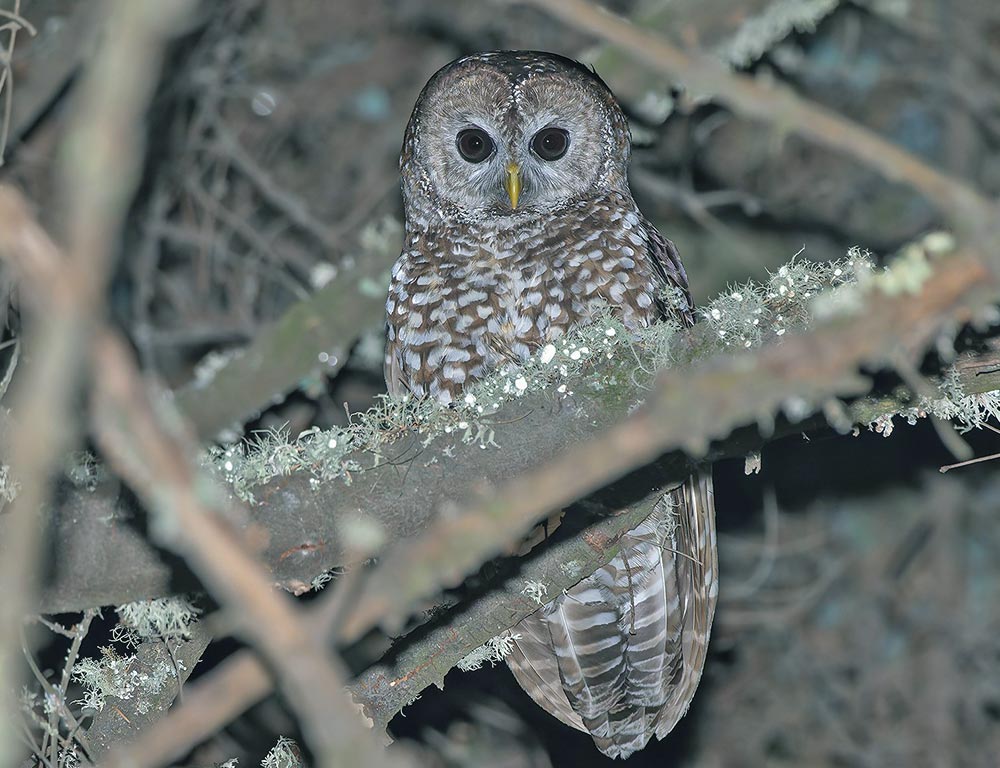
- Scientific name: Strix occidentalis lucida
- Life span: 4-15 years in the wild
- Size: 17-19 inches
- Weight: 1-1.65 pounds
- Food: Small mammals, birds, and insects
- Wingspan: 40-45 inches
- Status: Threatened
The Mexican Spotted Owl, a subspecies of the Spotted Owl, inhabits various forested habitats in Utah, including canyons and mountainous areas.
Recognized for its dark eyes and mottled brown plumage, these owls share many characteristics with the northern subspecies. Mexican Spotted Owls are primarily nocturnal hunters, preying on small mammals, birds, and insects.
Habitat loss, logging, and competition with the barred owl have led to a decline in their populations, resulting in their designation as a threatened species. Conservation efforts are essential to protect their remaining habitats and ensure their survival.
15. Elf Owl
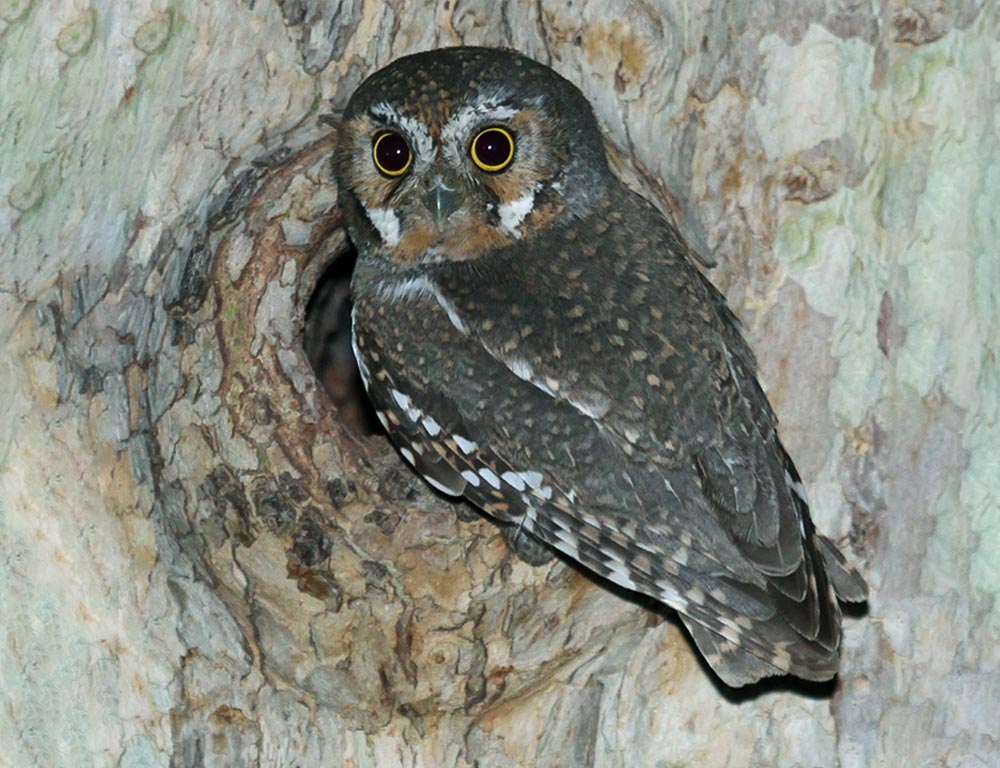
- Scientific name: Micrathene whitneyi
- Life span: 3-6 years in the wild
- Size: 5-6 inches
- Weight: 1-1.5 ounces
- Food: Insects, especially moths and beetles
- Wingspan: 9-10 inches
- Status: Stable
The Elf Owl, one of the smallest owl species, is found in arid and semi-arid regions of Utah. With its small size, rounded head, and large yellow eyes, these owls have a charming and diminutive appearance.
Elf Owls are primarily nocturnal hunters, specializing in catching insects such as moths and beetles. They may also consume small spiders. Their preferred habitats include saguaro cacti and other trees with cavities suitable for nesting.
Despite their size, Elf Owls are resilient and well-adapted to survive in challenging environments. Conservation efforts focused on preserving their habitats are crucial for maintaining stable populations of these delightful little owls.
Wrapping Up
Utah’s diverse landscapes provide habitats for various owl species, each uniquely adapted to its environment.
From the powerful and iconic Great Horned Owl to the elusive Mountain Pygmy Owl, these birds play vital roles in maintaining ecological balance.
Unfortunately, several owl species face threats, including habitat loss and human activities. Conservation efforts are paramount to ensure these incredible creatures’ survival and preserve Utah’s rich biodiversity.
Observing these majestic birds in their natural habitats is a reminder of the interconnectedness of all living things and the importance of safeguarding our natural world.